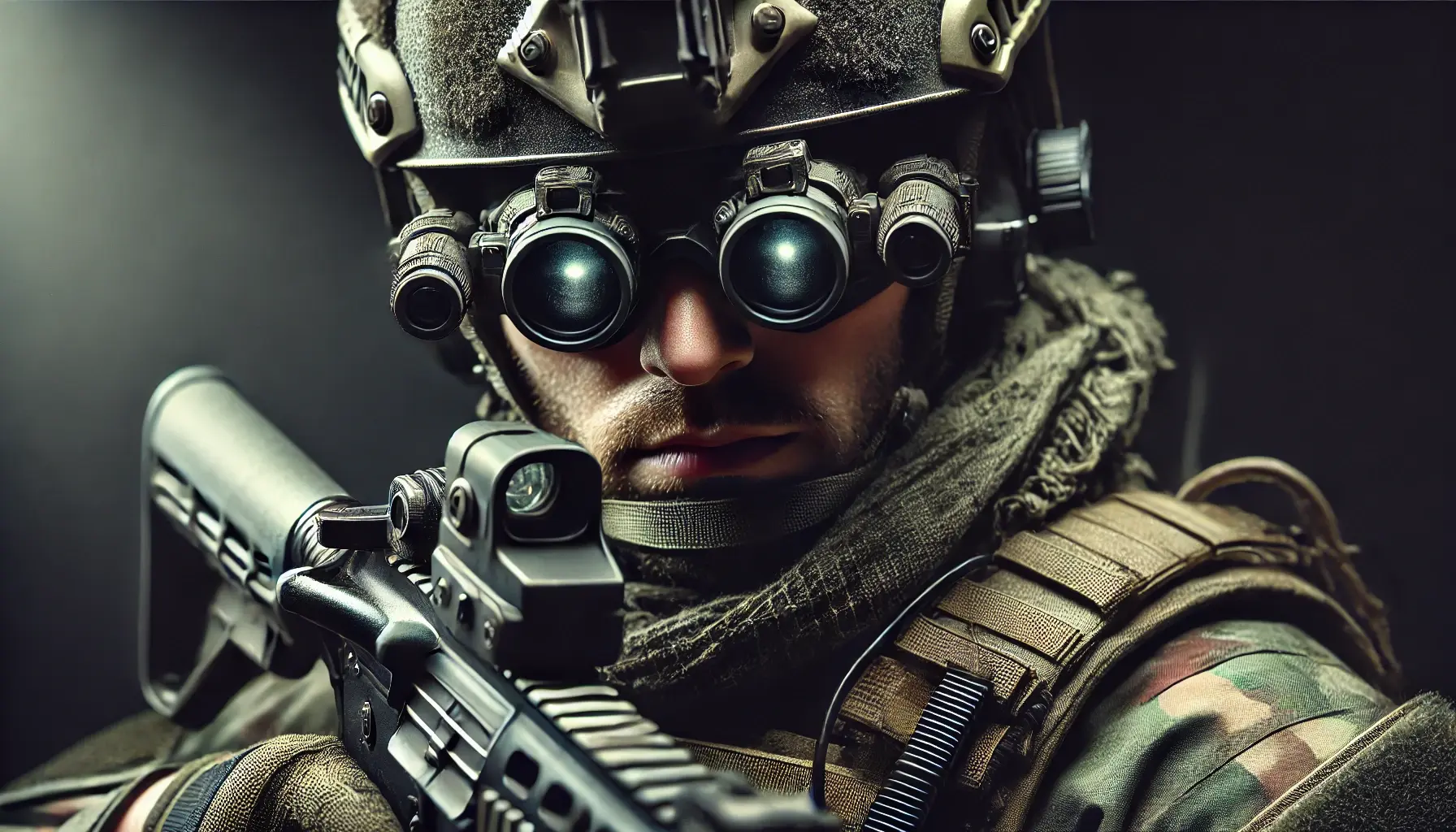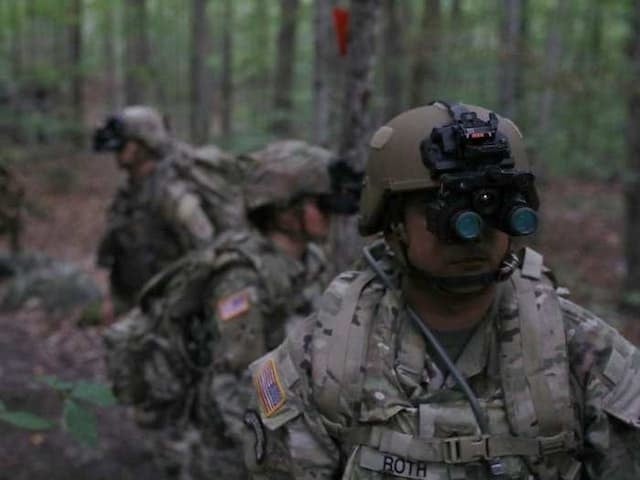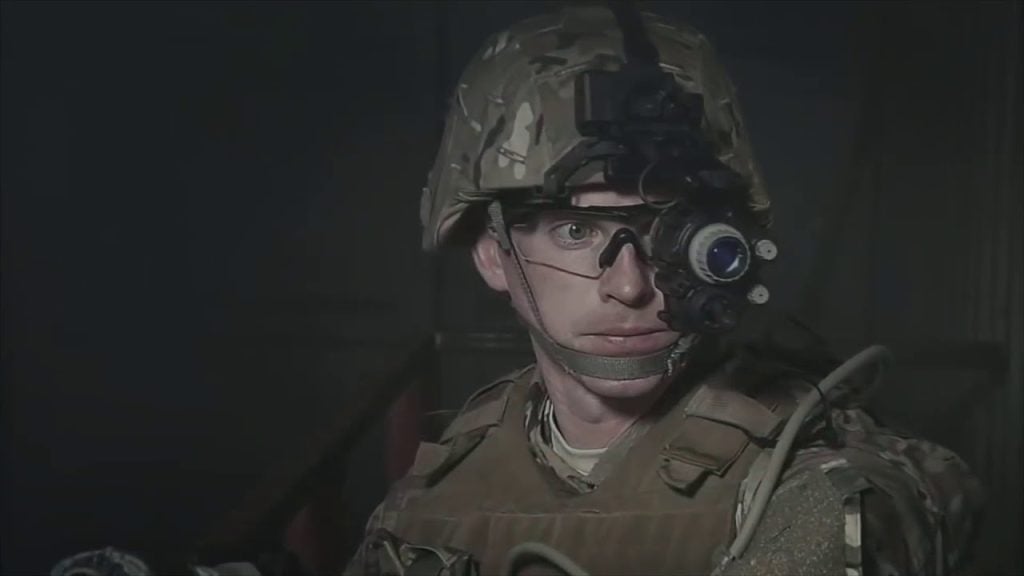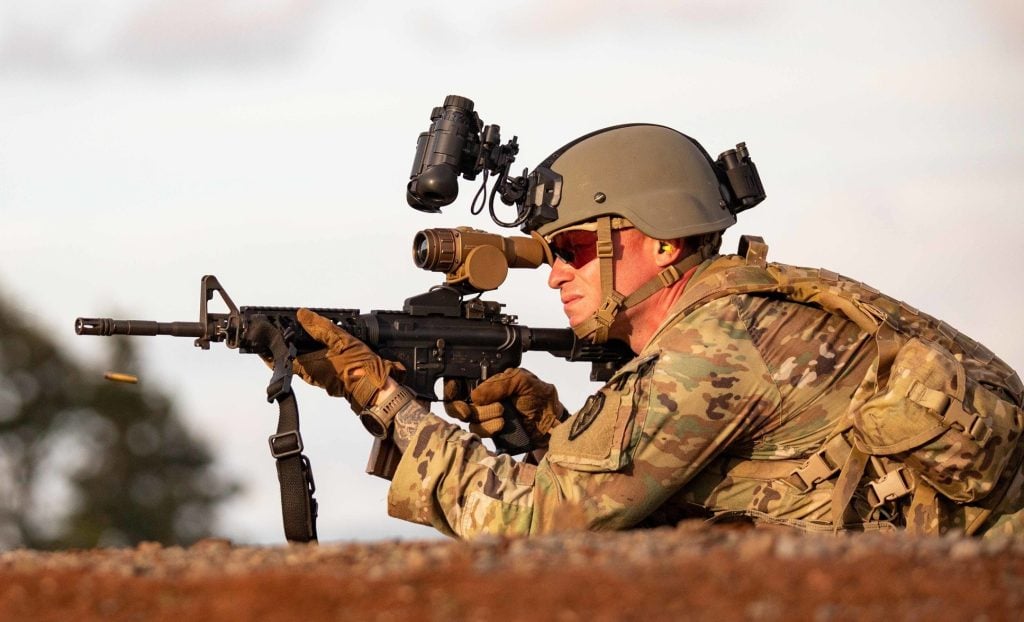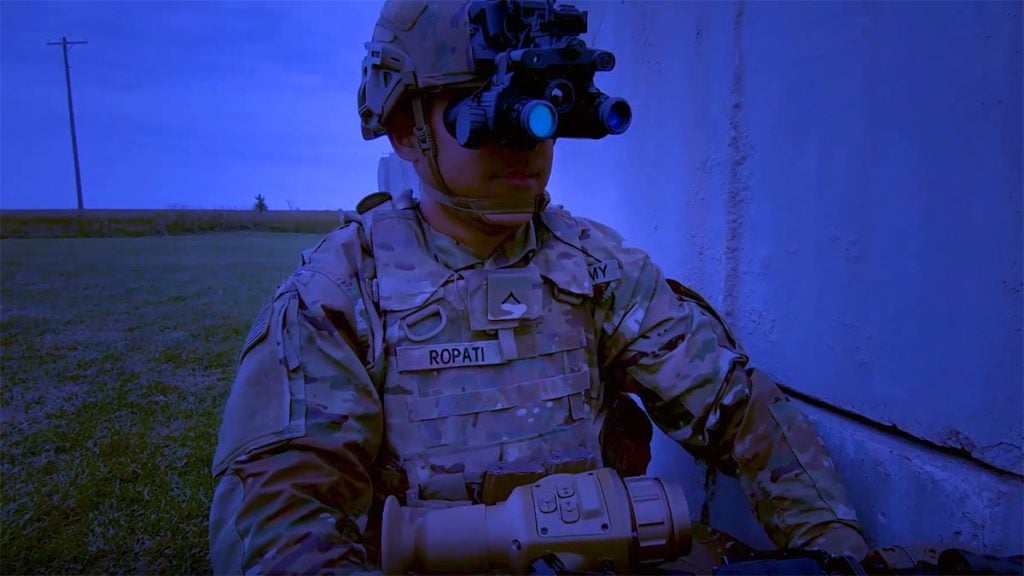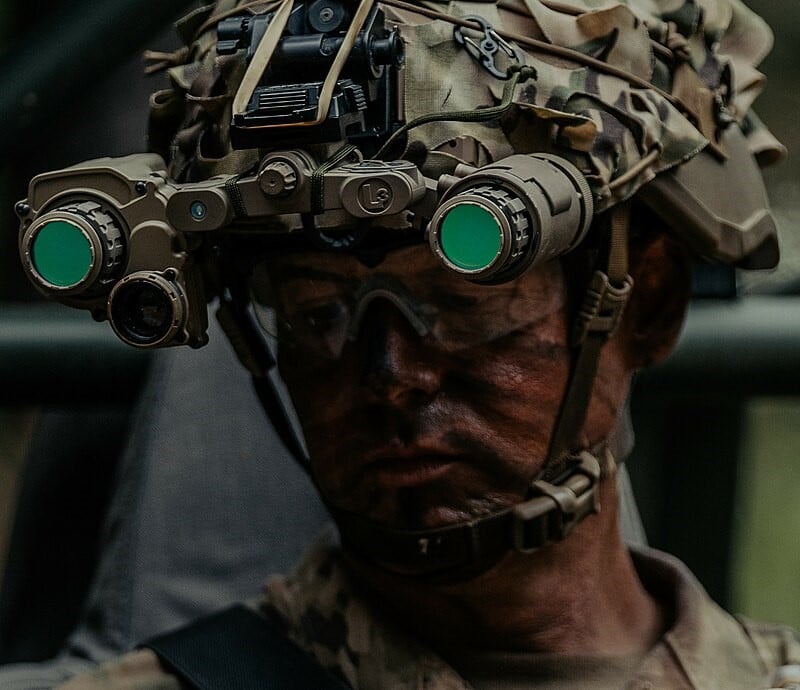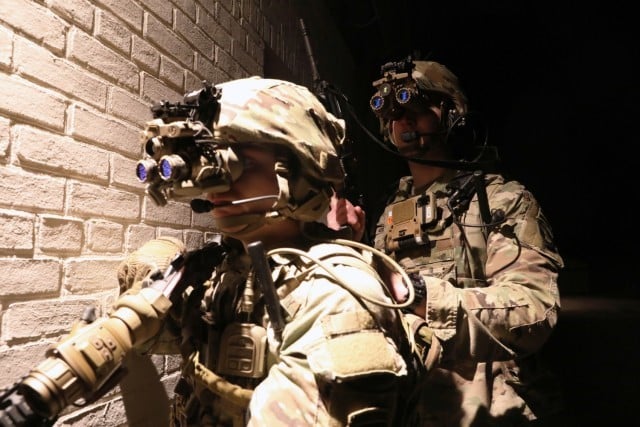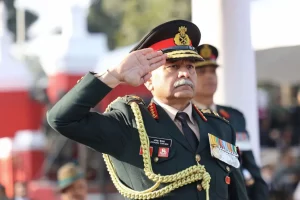In the high-stakes world of modern warfare, the ability to operate effectively in the dead of night can make the crucial difference between success and failure, life and death. This is where the latest advancements in military night vision technology come into play, granting armed forces a decisive advantage over their adversaries.
From the rugged and reliable to the cutting-edge and innovative, the landscape of military night vision goggles is rapidly evolving, with leading defense contractors vying to equip the world’s elite soldiers with the most advanced optoelectronic systems. In this comprehensive guide, we’ll delve into the 4 Best Military Night Vision Goggles, exploring the features, capabilities, and technological breakthroughs that are redefining the way military operations are conducted under the cloak of darkness.
10 Best Infantry Fighting Vehicles in the World 2024
1. BAE Systems’ ENVG III/FWS-I
At the forefront of the night vision revolution is BAE Systems’ ENVG III (Enhanced Night Vision Goggle III) and FWS-I (Family of Weapon Sight-Individual) system. Developed under a lucrative US Army contract, this integrated solution harnesses the power of 12-micron thermal technology to deliver unparalleled target acquisition and weapon firing capabilities in even the most challenging low-light conditions.
The ENVG III/FWS-I’s wireless connectivity between the goggles and weapon sight eliminates the need for cumbersome switching, streamlining the engagement process and allowing soldiers to quickly and quietly neutralize threats. The rapid target acquisition feature, which displays the weapon sight imagery and crosshair directly within the night vision goggles, further enhances the shooter’s accuracy and efficiency.
Complementing its cutting-edge performance, the ENVG III/FWS-I also boasts impressive ergonomics, being lighter and more compact than its predecessors. BAE Systems has also optimized the system for low power consumption, ensuring extended operational endurance on the battlefield.
2. Leonardo DRS’s ENVG III
Alongside BAE Systems, another key player in the ENVG III program is Leonardo DRS, a defense technology giant that has partnered with N2 Imaging Systems to develop its own highly capable night vision solution. Leveraging the power of an information hub through the ENVG display, the Leonardo DRS ENVG III provides soldiers with unparalleled situational awareness and rapid target acquisition capabilities.
The system’s seamless integration with the army’s Nett Warrior network further enhances its utility, allowing for the seamless sharing of critical information and imagery across the battlefield. This connectivity, coupled with the ENVG III’s advanced image processing algorithms, gives warfighters a decisive edge in navigating and engaging targets in the darkest of environments.
3. L3’s ENVG-B
Joining the ranks of cutting-edge night vision systems is L3’s ENVG-B (Enhanced Night Vision Goggle-Binocular), a hybrid device that combines the best of image intensification (I2) and thermal imaging technologies. By fusing these complementary capabilities, the ENVG-B offers unparalleled target detection and engagement capabilities, empowering soldiers to neutralize threats with greater precision and confidence.
The ENVG-B’s wireless connectivity with the army’s Nett Warrior system further enhances its utility, providing augmented reality algorithms that deliver unparalleled situational awareness. The system’s high-resolution display and advanced personal area network connectivity ensure that critical information is readily accessible to the user, streamlining decision-making and mission execution.
Top 10 Facts about UK Special Forces SAS
4. Harris’s AN/PSQ-20 SENVG
Rounding out the top-tier night vision offerings is the Harris AN/PSQ-20 SENVG (Spiral Enhanced Night Vision Goggle), a refined version of the original AN/PSQ-20 ENVG. This monocular system seamlessly fuses image intensification and infrared micro-bolometer technologies, delivering enhanced situational awareness and threat detection capabilities.
One of the key advantages of the SENVG is its versatility, as it can be quickly mounted to or removed from an advanced combat helmet, allowing for both hands-free and handheld use. The separate battery pack further enhances the system’s operational flexibility, ensuring that soldiers can adapt to the demands of the mission at hand.
Moreover, the SENVG’s compatibility with existing weapon systems and its expanded viewing capabilities, including a color microdisplay, make it a highly versatile and sought-after night vision solution for military forces worldwide.
Cutting-Edge Night Vision from ATN and FLIR Systems
While the US Army’s ENVG III program has dominated the headlines, other defense technology companies have also been quietly pushing the boundaries of night vision technology. Notable examples include ATN’s PS15-4 Gen IV and FLIR Systems’ Nyx-7 PRO Gen III range.
ATN’s PS15-4 is a compact dual NVG system that leverages two high-performance image intensification (I2) tubes to provide exceptional depth perception and clarity in the darkest of conditions. The built-in infrared illuminator further enhances the system’s utility, allowing for easy map-reading and navigation in complete darkness.
On the other hand, FLIR Systems’ Nyx-7 PRO Gen III range is a rugged, compact bi-ocular goggle that utilizes high-grade optics and automatic brightness controls to deliver clear, crisp images even in adverse weather conditions. The system’s universal helmet mount and the ability to convert to a long-range optic using 3x and 5x magnified lenses make it a versatile and adaptable night vision solution for a wide range of military applications.
The Future of Night Vision: Innovations and Advancements
As the global defense landscape continues to evolve, the demand for cutting-edge night vision technology shows no signs of abating. Leading defense contractors are constantly pushing the boundaries of what’s possible, investing heavily in research and development to deliver the next generation of night vision systems.
From advancements in thermal imaging and sensor fusion to the integration of augmented reality and wireless connectivity, the future of military night vision is poised to be more sophisticated, more capable, and more essential than ever before. As armed forces around the world strive to maintain a decisive edge over their adversaries, the race to dominate the darkness is only just beginning.
4 Elite Police Forces in the World 2024
Conclusion
In the high-stakes world of modern warfare, the ability to operate effectively in the dead of night can make all the difference. The latest advancements in military night vision technology, exemplified by the cutting-edge solutions from industry leaders like BAE Systems, Leonardo DRS, L3, and Harris, have revolutionized the way soldiers engage and navigate in low-light conditions.
By harnessing the power of thermal imaging, hybrid technologies, and seamless integration with battlefield networks, these night vision goggles are empowering warfighters to achieve mission success and ensure the safety of their comrades. As the defense industry continues to push the boundaries of what’s possible, the future of night vision is poised to be more sophisticated, more capable, and more essential than ever before.
FAQs
1. What is the best military night vision?
The PVS-14 Night Vision Monocular is the standard night vision goggle issued to the US armed forces and is also favored by numerous foreign (NATO) military forces.
2. What night vision goggles does the military use?
The AN/PSQ-20 Enhanced Night Vision Goggle (ENVG) is a third-generation passive monocular night vision device designed by ITT Exelis for the United States Armed Forces. This device combines image-intensifying and thermal-imaging technologies, allowing for visibility in extremely low-light conditions.
3. What is the most advanced night vision goggles?
The L3Harris ENVG-B equips soldiers with advanced capabilities to target, engage, and neutralize threats, improving mission success and operator safety. This helmet-mounted, dual-waveband goggle combines industry-leading fused white phosphor and thermal technologies.
4. Why are NVGs so expensive?
Producing these tubes is costly due to the need for precise manufacturing processes. Moreover, the goggles must be rugged and durable to endure harsh environments, which further increases the overall cost. Additionally, the research and development expenses involved in enhancing night vision technology are substantial.
5. What NVGs do pilots use?
The AN/AVS-6 and AN/AVS-9 night vision goggles are frequently used by pilots.
